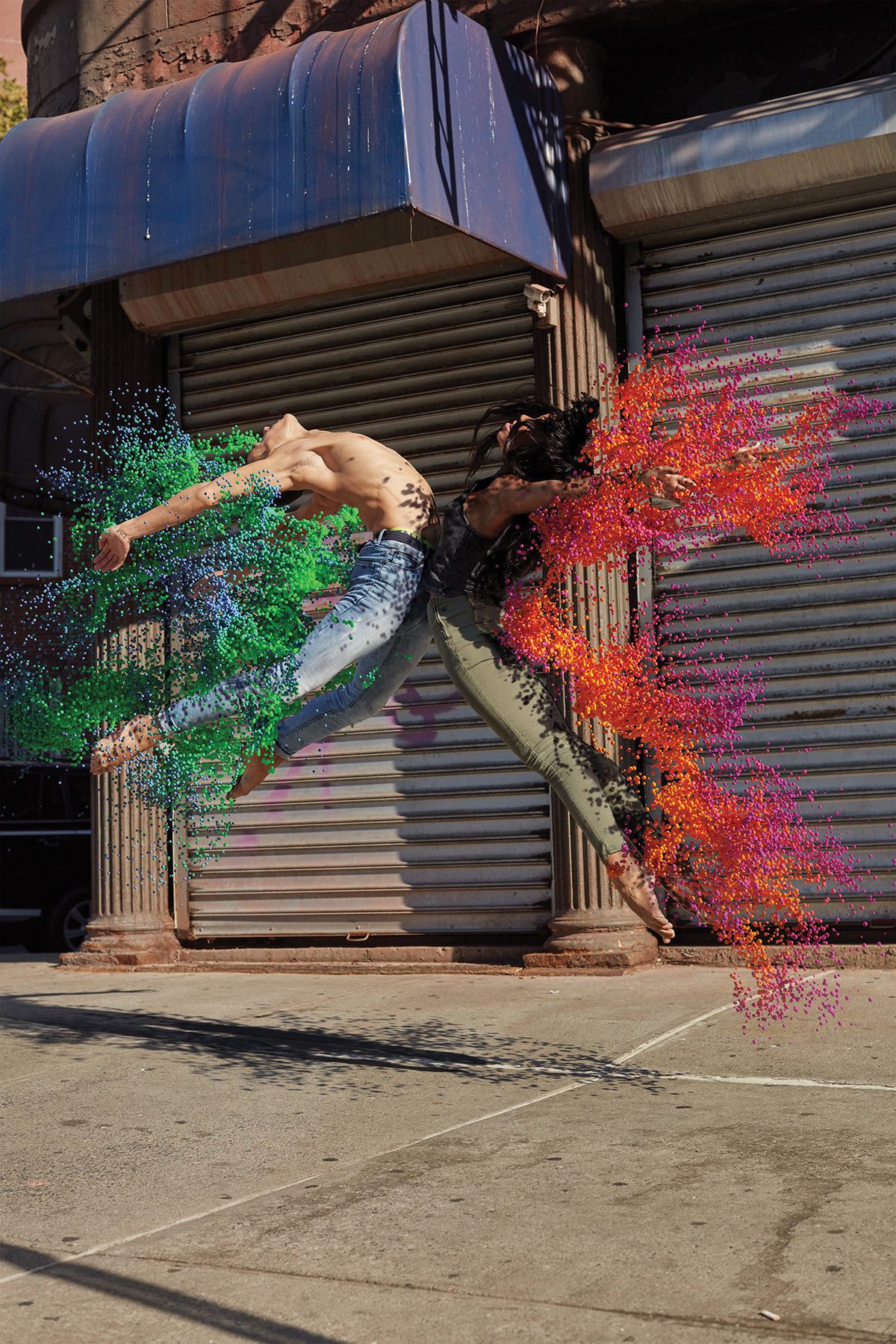
CGI—computer-generated imagery—isn’t just for Hollywood movies, says Jean-Yves Lemoigne. During COVID-19 pandemic downtime, Lemoigne spent 10 months learning CGI techniques to enhance his photography post-production skills. His series “Dancing with Particles” is at the crossroads of his two main interests: bodies in motion and sculpture. “It was really interesting to explore all the particles, physical effects, and textures that CGI can create inside a photo,” he says.

For the series, Lemoigne made photos of dancers on New York City streets using a Canon EOS 5DS R and a Canon EOS-1D X. He also made a 360-degree HDR photo of each location using a Ricoh Theta camera on a tripod in bracketing mode. The 360-degree photo helped him recreate the light and reflections of the space in Cinema 4D, the CGI software.
“The next step was to import a cutout of the dancer and create a volume matching his position. The Cinema 4D and X-particles [plugin] offer infinite options of particles effects with wind, attractors, physics, specifications, etc.,” he says. The final work was composited in Adobe Photoshop.
“The challenge was to have a CGI that looked unreal but at the same time seemed really to be there,” he says. “I like the energy. It seems to be a snapshot of dancers with colored powder, but you look closer, and it is not.”
Amanda Arnold is a senior editor.
Tags: post capture
